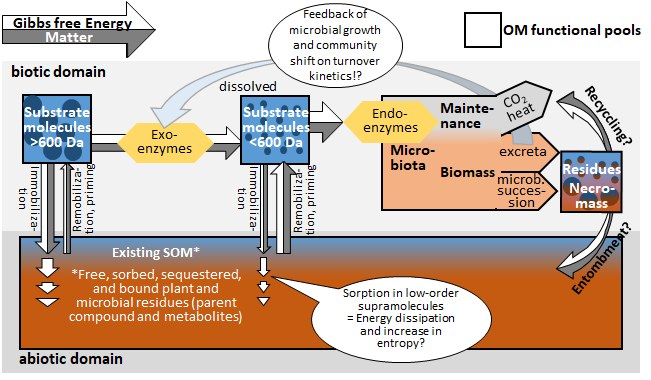Substrate affects microbial driven distribution of energy and matter among organic carbon functional pools in soil

The project Driver Pool aims to understand the interplay between energy fluxes/thermodynamic balances and substrate turnover pathways, modulated by shifts in microbial abundance, community structure and functioning. Which are the most relevant thermodynamic driving forces directing organic matter (OM) transformation processes and distribution among OM functional pools in soil? We hypothesize that OM turnover is driven by an energy flux-controlled interplay between three process types varying in their rate, energy balance and tendency to dissipate, keep or accumulate Gibbs energy. Furthermore, OC from substrates may be distributed among various functional pools in soil that can be energetically distinguished in “enthalpy storage pools” representing ordered structures like biomass and “(temporary) entropy storage pools” like supramolecular OM and necromass. The project is part of a group of coordinated core-projects. The turnover of seven substrates, mostly with well-defined molecular and thermodynamic properties, added to soil will be tested. We aim to determine (i) complete balances of energy and matter for microbial turnover, (ii) kinetics of microbial driven processes and (iii) quantities of the distribution of substrates among soil functional pools, in order (iv) to find out which substrate properties direct fluxes of energy and matter into which pools, resulting in substrate specific CUE, EUE, and heat flow respectively. Finally, (v) a balance-based thermokinetic model will be developed integrating the combined data of WP 1-3. This model will be based on the law of Hess representing the connection between material and energy fluxes (formulated for enthalpy, entropy, Gibbs energy).
Link to English scientific abstract
Link to German scientific abstract